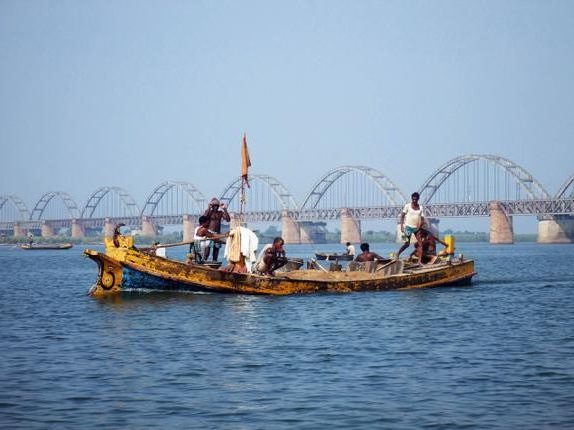- The Parliament of India has passed the crucial bill to declare 111 rivers across the country into National Waterways (NW). So far only five of the river stretches had been declared as National Waterways.
- The Act merges five existing Acts which have declared the 5 National Waterways.
- It has declared 106 Waterways as NWs through a single piece of legislation, in addition to the existing five NWs.
- The act came into force in April, 2016.
- The Inland Waterways Authority of India (IWAI) which is mandated to develop, maintain and regulate these for navigation, would be the nodal agency.
Constitutional Provisions
- Under Entry 24 of the Union List of the Seventh Schedule of the Constitution, the Central Government can make laws on shipping and navigation on inland waterways which are classified as National Waterways by Parliament by law.
- Entry 17 of the State List- Water, that is to say, water supplies, irrigation and canals, drainage and embankments, water storage and water power subject to the provisions of Entry 56 of List I.
Benefits
- These waterways can be developed as environment-friendly modes of transport. This will decrease the huge logistics cost in India significantly. But the Government will have to figure out innovative ways of financing as they would be requiring about Rs. 70,000 crore to develop these river stretches into navigable transport ways. Government will explore multiple sources of finance, including market borrowings and tapping the National Clean Energy Fund (NCEF) and the Central Roads Fund (CRF).
- Water transport is not only environment-friendly but also cheaper than other modes of transport. It would cost Rs. 1.5 a Km to carry cargo by road and Re. 1 by rail. Through waterways, the cost would be a mere 25 paise a Km.
- It takes lesser time to transport cargo by waterways and the chances of congestion and accidents on highways are eliminated.
- There is a huge potential for domestic cargo transportation as well as for cruise, tourism and passenger traffic.
- There is huge potential for public private partnership (PPP) led investments in dredging, construction, operation and maintenance of barges, terminals, storage facilities, and navigation, as well as tourism.
- It will help in the generation of millions of job opportunities.
- It will boost the maritime trade of the states and augment their economies.
Challenges
- Many of the rivers generally remain dry. There is a need to develop water reservoirs for conservation of rain water to feed such rivers.
- There is a need to estimate the quantum of water required on a weekly basis throughout the year to maintain the minimum depth of water in the canals for navigability, besides ensuring that drinking, irrigation and other demands of water do not get impacted.
- Higher water salinity, especially in the coastal regions and estuaries , and constant inflow of silt in the rivers can be problematic.
- The cost savings from NW would never be realized unless vessels are able to load to their full tonnage. This is possible only if the rivers are deepened between 2.5 and 4.5 meters and if return cargo is made available for the vessel to avoid wasteful return trips.
- The right over water usage and ownership of adjacent land remain with the state government. Once a canal is declared a NW, then for any development of infrastructure or even for withdrawal of water, the State should get permission of the IWAI. This undermines the authority of the states in local development.
- The right of the state governments to develop additional irrigation projects would also be impaired. Hence, specific provisions to protect the rights of the state government over the waterway even after its declaration as an NW may be provided for.
- The financing requirement for NWs is huge and open-ended. Heavy investment will be needed to procure equipment, including dredgers, shipping vessels, and barges of different sizes.
- These NWs will also require river ports with their support infrastructure- road and rail connectivity, warehouses and other services.
Way Forward
- The IWAI may need to be strengthened with trained manpower along with more regional offices to enable monitoring of the projects in different states.
- Apart from the IWAI, creation of a state level water management committee may be vital to resolve the issues at the state level.










